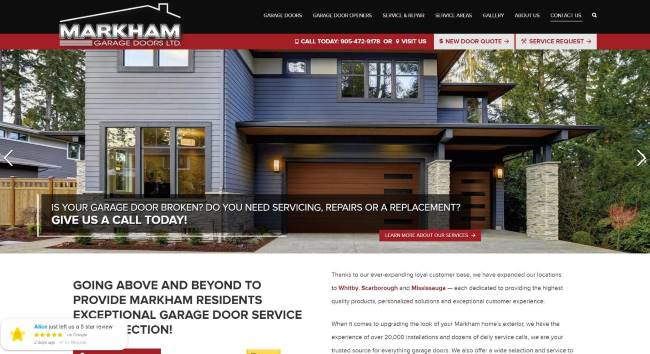People are much more likely to buy based on the recommendation of a peer. Even if they don’t know the person, and just read their online review, shoppers tend to trust those words more than any marketing message you can craft. You may not be quite certain of the best ways to showcase reviews on your business-to-many (B2M) website, but it’s worth the time.
According to BrightLocal’s Local Consumer Review Survey, 87% of consumers read online reviews before making a purchase. It stands to reason that business owners do the same thing. If you’ve not yet incorporated feedback into your marketing strategy, you may want to reconsider.
Using reviews on a B2M website is a bit different than including them on an e-commerce site. You must figure out how to reach all the buyer personas you serve. Here are some key things to keep in mind about best practices when it comes to using reviews on your B2M website.
1. Vary What You Feature
When you serve a wide variety of customers, you must vary what you feature on your site. When gathering reviews to use as snippets, such as in a slideshow, make sure you include ones both for your consumer fans and business owners.
Keep in mind that people coming to your home page may be from any customer group. Your goal with your homepage is to offer a range of reviews that speak to all types of customers. If you only focus on consumers, you miss an opportunity to speak to business owners, and vice versa.

Airbnb is an example of a B2M model. They provide a service to vacationers looking for a place to rent and to people who own homes and want to offer short-term rentals. To showcase the reviews on their site, they separate their landing pages.
Their homepage focuses on consumers, who can click on any listing and see reviews for it. They also have a section for hosts with highlighted testimonials showing why people decided to list on Airbnb. By separating the reviews, Airbnb can highlight what pertains to a specific customer group within their audience.
2. Be Honest
A natural tendency is to try to make your business look fabulous. Who doesn’t want that? However, if you don’t allow for honest feedback, your customers may be disappointed in what you have to offer and find it difficult to trust you moving forward.
Rather than try to stop negative reviews, allow them through and then fix the issues. Make sure you respond, so other people can see you care and you worked hard to rectify any problems.
Sure, you could hire a company to manage your reputation and get rid of those poor reviews, but it may not serve your best interests. People may have posted in more than one location or told others about their poor experience. You’re better off fixing problems as they’re raised.
3. Showcase Extreme Effort
Do you go above and beyond for your customers? Most strong businesses take on the extra tasks others won’t. If you did something out of the ordinary, highlight testimonials and reviews showing what you did. Let the customer make up their mind about how amazing your service is.

Markham Garage Doors uses testimonials highlighting how they went above and beyond. One of the examples explains how a repairman came out in heavy snow to fix an issue. Other fan reviews talk about fast and courteous service.
4. Make Them Easy to Find
Don’t place your reviews on a hidden page. Put them on your landing pages. Add a button so clients can share their own thoughts. Use a star system, so those in a hurry can see your combined review total at a glance.
5. Impress Business Owners
When you’re serving other businesses, showing how happy your consumer clients are can be the deciding factor in whether they choose you or not. Don’t be afraid to point out your high number of positive reviews with both sectors on the opposite landing page.

Upwork serves both business owners who need to hire a freelancer and people who want contract work. On their homepage, they list reviews from both types of customers. Note how the B2C customer’s review focuses on the relationship between the freelancer and the business mentioned above.
6. Remember Social Proof
The power of social media is undeniable. If you can tie your website reviews to your social reviews, you’ll gain immediate authenticity. Look for ways to embed details from Google and
Facebook on your website.
7. Be Sensitive
Think about the emotions your customers experience. What are the pain points driving both your consumer clients and business clients to you for a solution? Define the emotions behind those pain points.
Use your reviews to speak to those emotions. Has someone else faced a similar problem and you solved it for them? Maybe contact your current customers and ask for feedback on a specific point that matches these emotions.
Don’t Overdo It
Customer reviews add a lot of value to your B2M website, but don’t be obsessed with adding them. There is other information you must convey to site visitors outside of the reviews. Think of your testimonials and ratings as a final deciding factor when people are almost ready to buy from you. Add them where it makes sense, and make them easy to find and submit.





